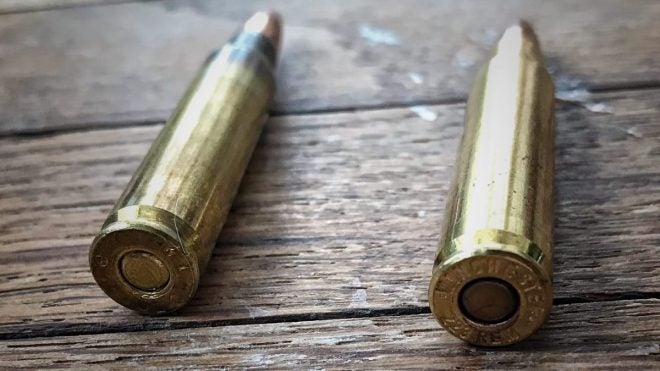Today, February 23rd, 2021 is an exciting excuse to go over one of the most popular and even disputed cartridges in North America. The .223 Remington cartridge designed all the way back in 1957. This lovable 22 caliber cartridge is a regular mainstay whether it is used for varmint hunting like coyotes to prairie dogs or even a valuable asset in a prepper’s back stock of ammunition. Regardless of how you may feel about the distinguished .223 Remington today, we at The Firearm Blog thought it would be an excellent reason to shed some light on the history and some facts about the good old .223 Remington. Happy 223 Day, everyone! Let’s dive right in!
Happy 223 Day: The .223 Remington Origin Story
Understanding .223 Remingtons origins can be kind of tricky since it was more or less one part in a bigger group effort working towards a military contract with both a new rifle and new cartridge. The .223 was designed and released to the public in 1957. To grasp this we should start with two things: how the United States felt after the end of the Korean War and the AR10 Rifle designed by Eugene Stoner.
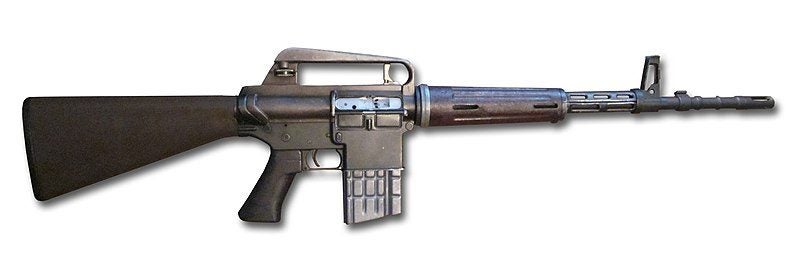
Early ArmaLite AR10. Photo Credit: Wikimedia Commons
As far back as the 1940s, the United States felt the anxiety that comes with keeping military implements up to date and effective with ever-evolving warfare. After the Korean War that ended in 1953, the United States was concerned with its current outdated set of arms present on battlefields. They had firearms like the M1 Garand, the M1 Carbine and in Korea specifically, they had the full-auto version of the M1 Carbine called the M2. Even though the carbine was lightweight, light recoiling, and overall a comfortable and simple gun, the cartridge was considered inefficient for the needs of the military. The .30 Carbine round was practically a pistol cartridge. It was slow-moving and large. The United States military took that and flipped it to looking for something high velocity and small.
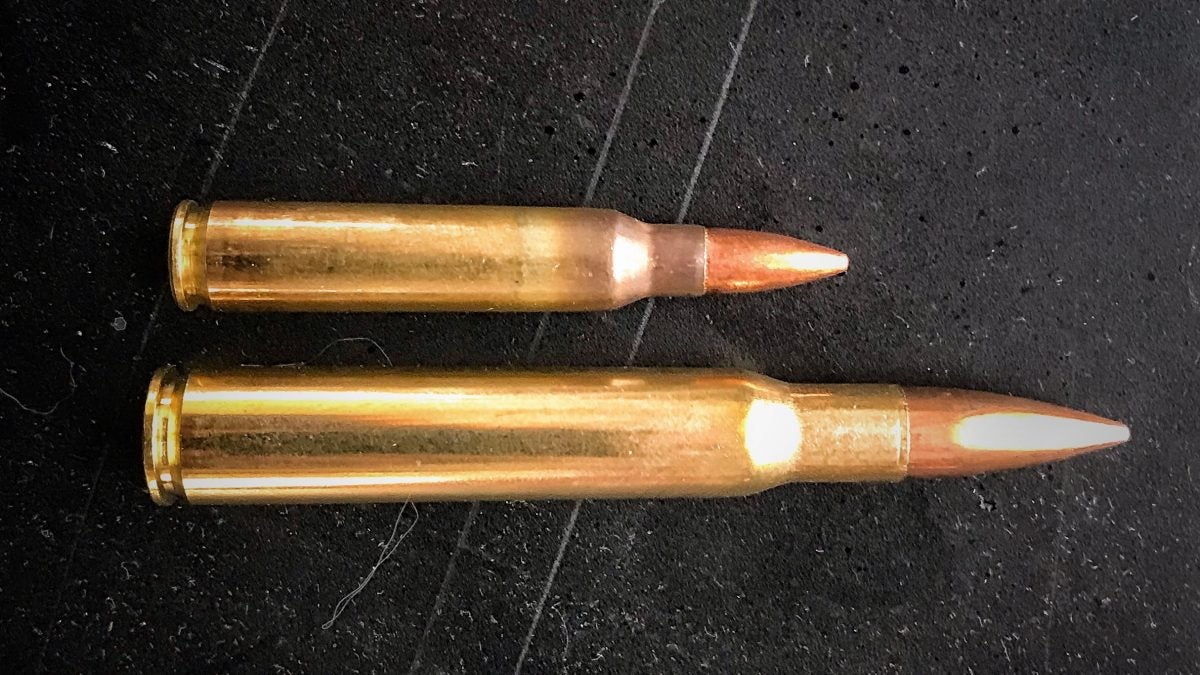
5.56x45mm NATO and 30-06 M2 Ball
Enter Engine Stoner, ArmaLite’s chief design engineer. ArmaLite was a small subsidiary of Fairchild Aircraft that was around from 1956 to 1983 and then recently revived in the 1990s. Eugene Stoner is one of the many great brains in firearm development history and he gave so much more than the AR15. A little more background to this can be found in Curious Relics #003. Initially, after a string of designs, he thought up the AR10 which was a semi-auto sporting rifle chambered in 308. With the military putting out the call of duty to manufacturers to present them with a new rifle and cartridge in the mid-1950s, Eugene Stoner answered that call along with Remington.
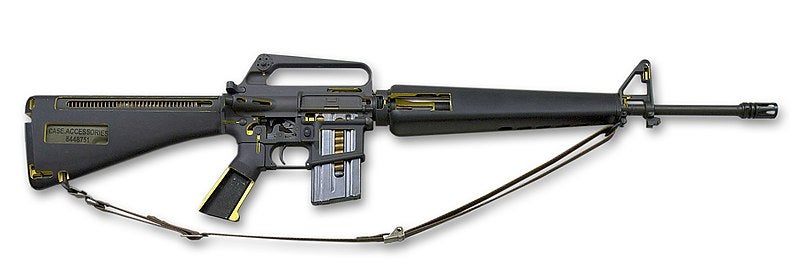
Cutaway Example of M16A1. Photo Credit: Wikimedia Commons
The United States had the M1 Garand, a semi-auto .30-06 Sprg beast of a rifle that was too heavy and aggressive and they also had the M1 and M2 Carbines (and an M3) that chambered the slow and somewhat impotent .30 Carbine cartridge. They set requirements for both new rifles which they hoped to be select-fire and a new cartridge. The Military Requirements for a new cartridge were as follows:
- .22 Caliber
- Capable of Exceeding Supersonic Speed at 500 Yards
- Capable of Penetrating a US Steel Helmet on One Side at 500 Yards
- Capable of Penetrating a .135″ Steel Plate at 500 yards
- Accuracy and Ballistics Equal to or Exceeding M2 ball Ammunition (30-06 for the M1 Garand)
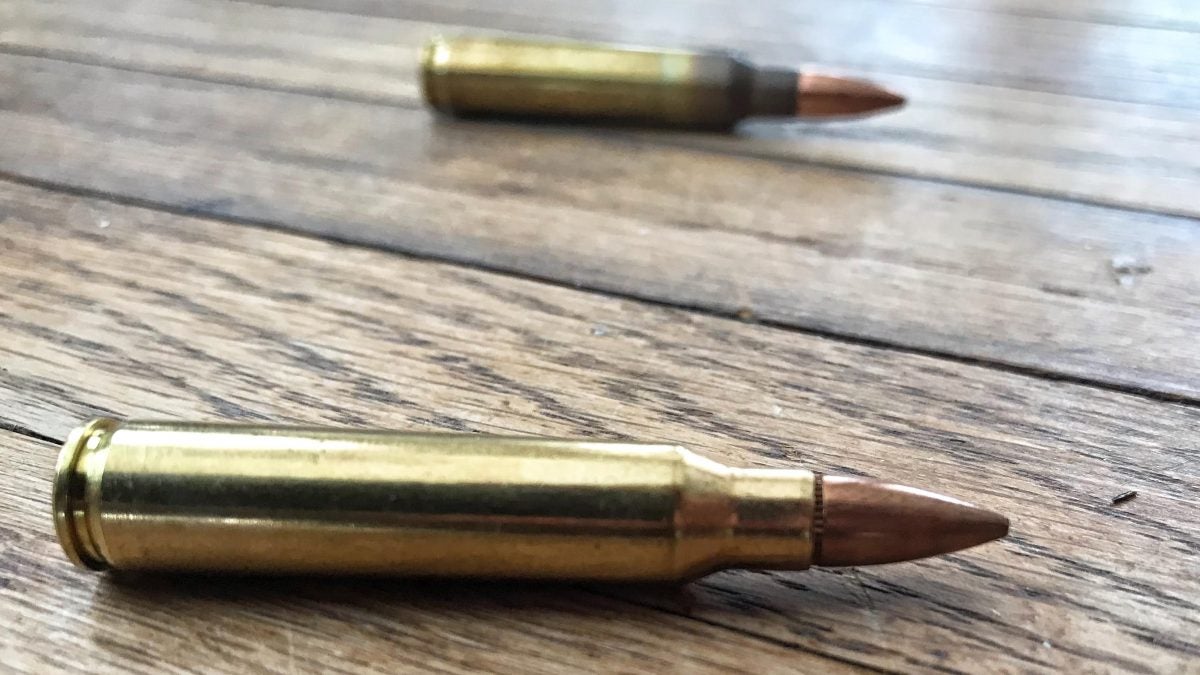
At this point, Eugene Stoner made small scaled-down changes to his AR10 design creating the AR15 chambered for Remington’s newly designed .223 Remington cartridge. The new cartridge was based on the very similar and popular .222 Remington cartridge. The 223 is often overshadowed by its earlier rifle counterpart and was never used by the military! The United States would go on to adopt the select-fire M16 Rifle based on the AR15 sporting rifle design that ArmaLite presented. ArmaLite sold the rights to Colt in 1959 when the military adopted the M16 and its redesigned 5.56x45mm NATO.
Happy 223 Day: The .223 Remington Specifications
The .223 Remington does not get enough love since it is living in the shadow of its little brother the 5.56x45mm NATO. What made it so special was that it was a tweaked design that just erupted over the last 60 years. It is in everyone’s vocabulary and it is known as a standard amongst varmint hunters. Let’s dive into what makes the .223 Remington tick!
- Designed: 1957
- Parent Cartridge: .222 Remington
- Available to Public: 1962 in the Remington 760 Pump Action Rifle
- Cartridge Casing: Bottleneck and Rimless
- Bullet Diameter: .224 inches
- Primer Type: Small Rifle
- Common Grain Weight Range: 36gr – 77gr
- Lineage/Variants: 5.56x45mm NATO, .223 Ackley Improved, .17 Remington, 204 Ruger, and the list really goes on!
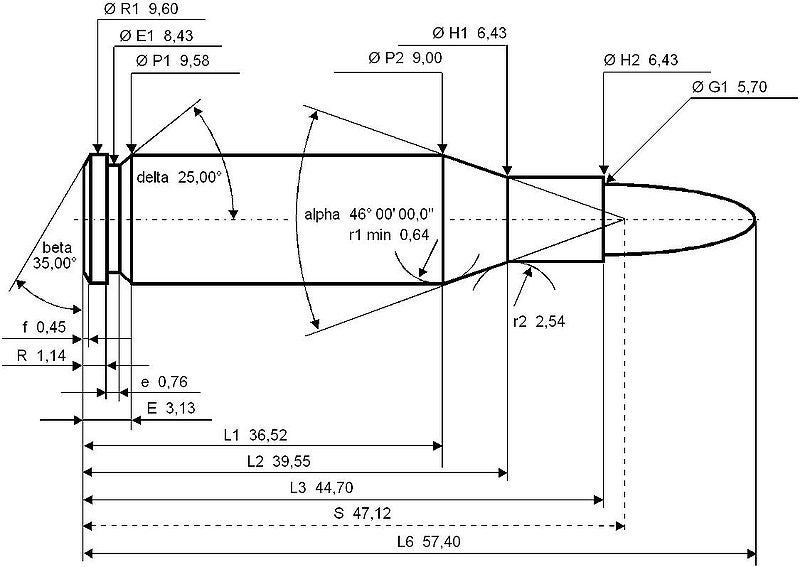
.223 Remington Dimension Blueprint. Photo Credit: Wikimedia Commons
Happy 223 Day: The .223 Remington vs 5.56x45mm NATO Controversy
I feel like since it is so hard to talk about .223 Remington without bringing up 5.56x45mm NATO we should go over the obvious, are they the same? Nope! They are not, but I would not blame anyone for thinking so since they are so very similar. Basically, putting brass thicknesses and powder charges aside, there are two main factors that separate these cartridges that are forever associated with one another. Their case dimensions and their chamber dimensions.
The casings have very small, subtle differences such as the 5.56x45mm NATO is longer. The chamber of 5.56x45mm NATO has a freebore length of .050″ to accommodate a slightly longer cartridge; whereas, the .223 Remington has a freebore length of only .025″. Freebore is the space that the bullet itself jumps through just before hitting the rifling. This significant difference means that if a 5.56 was put into a .223 chamber it has the very real chance of producing unsafe pressures that could result in damage to the firearm, lessened barrel life, and even damage to the shooter. The long and short of it all is that it is perfectly safe and acceptable to shoot .223 in a 5.56 chambering and not the other way around.
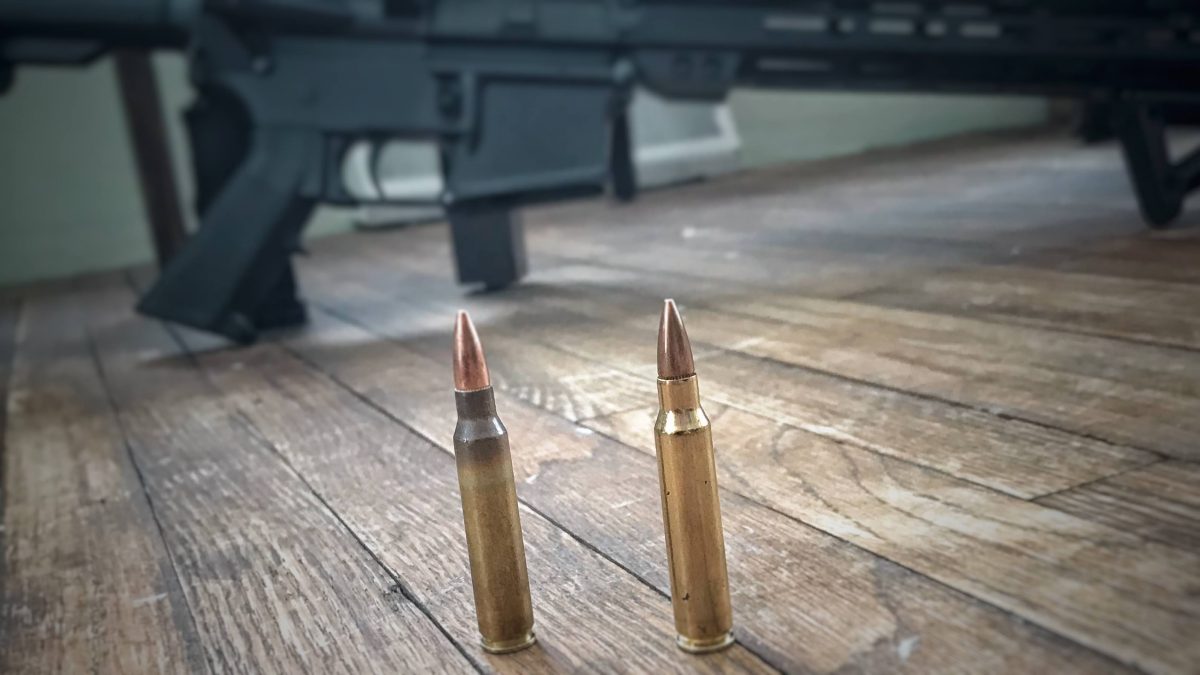
5.56 (left) .223 (Right)
I hope this article was informative and fun for all of you on 2/23/2021. Happy 223 Day! As always, thank you for reading The Firearm Blog! Be safe out there, have fun while shooting, and we will see you next time! Also, let us know what you think in the comments below! We always appreciate your feedback.
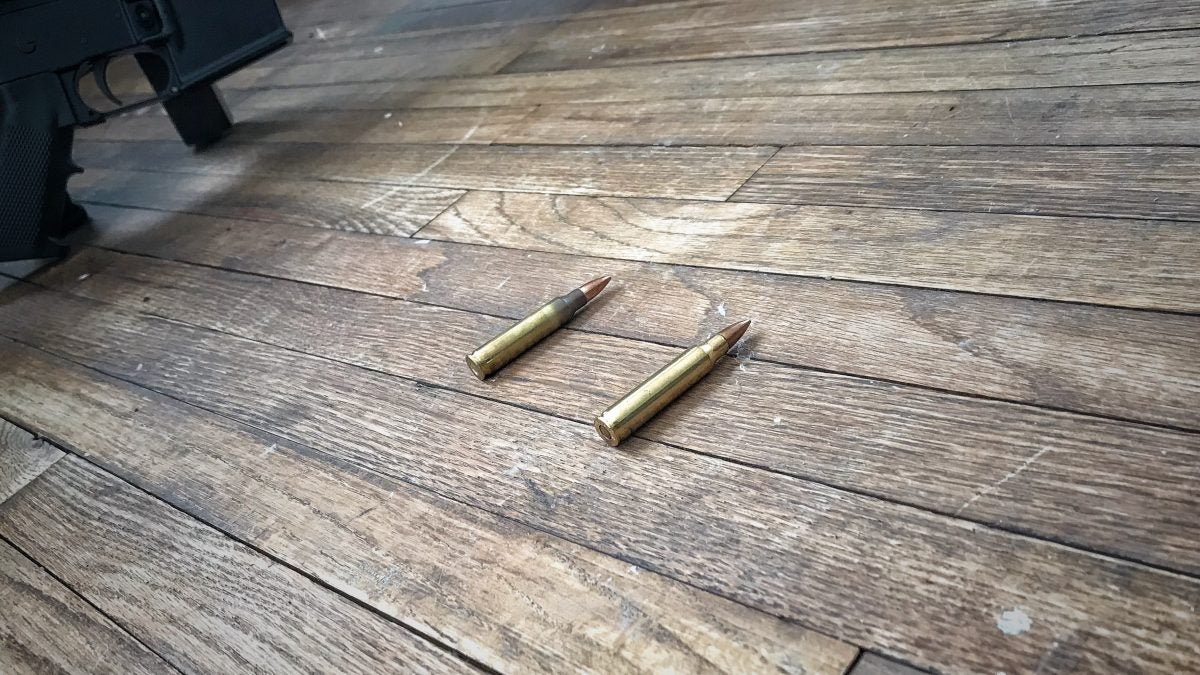
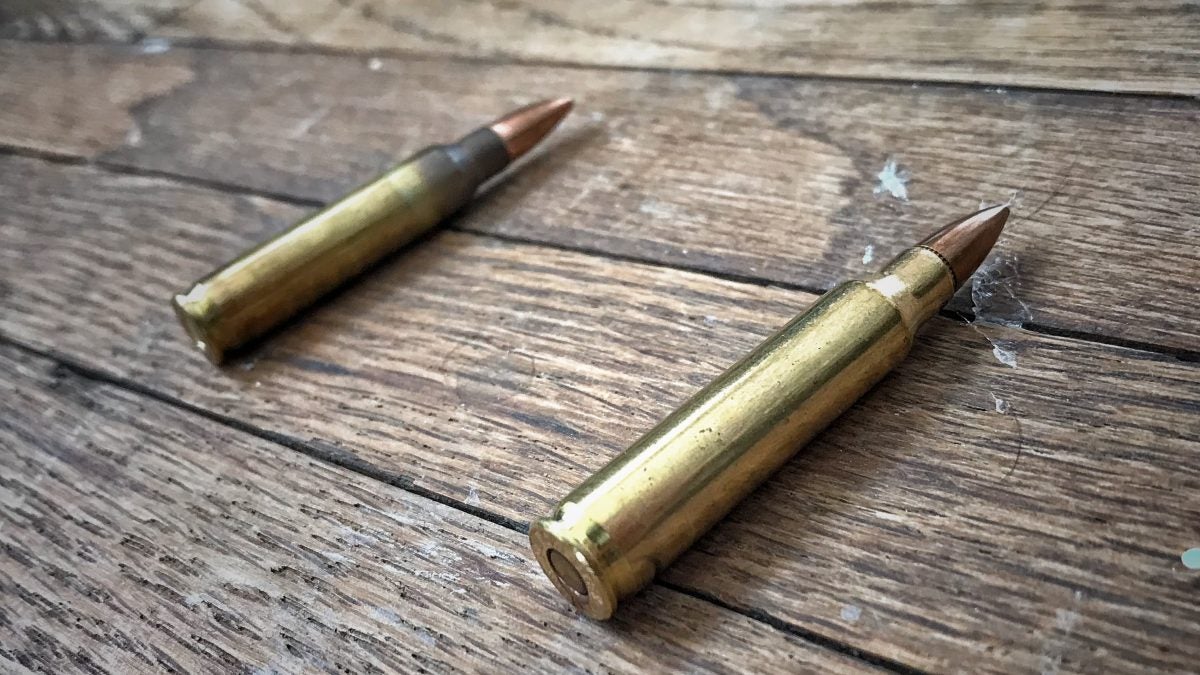
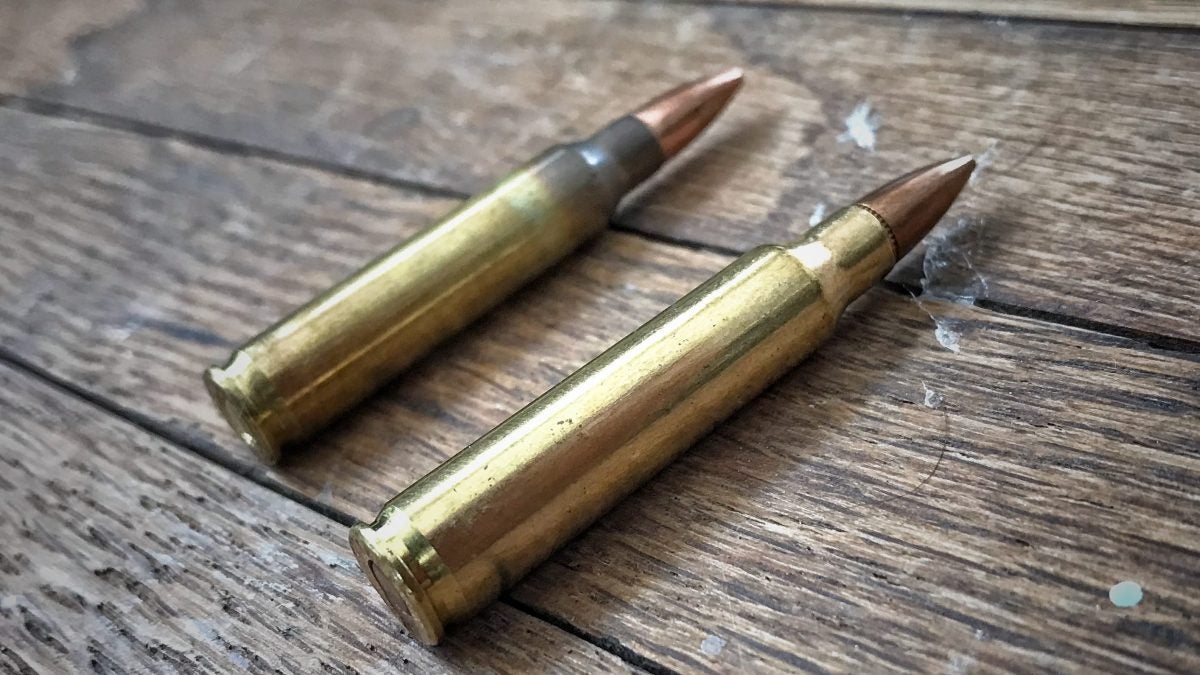
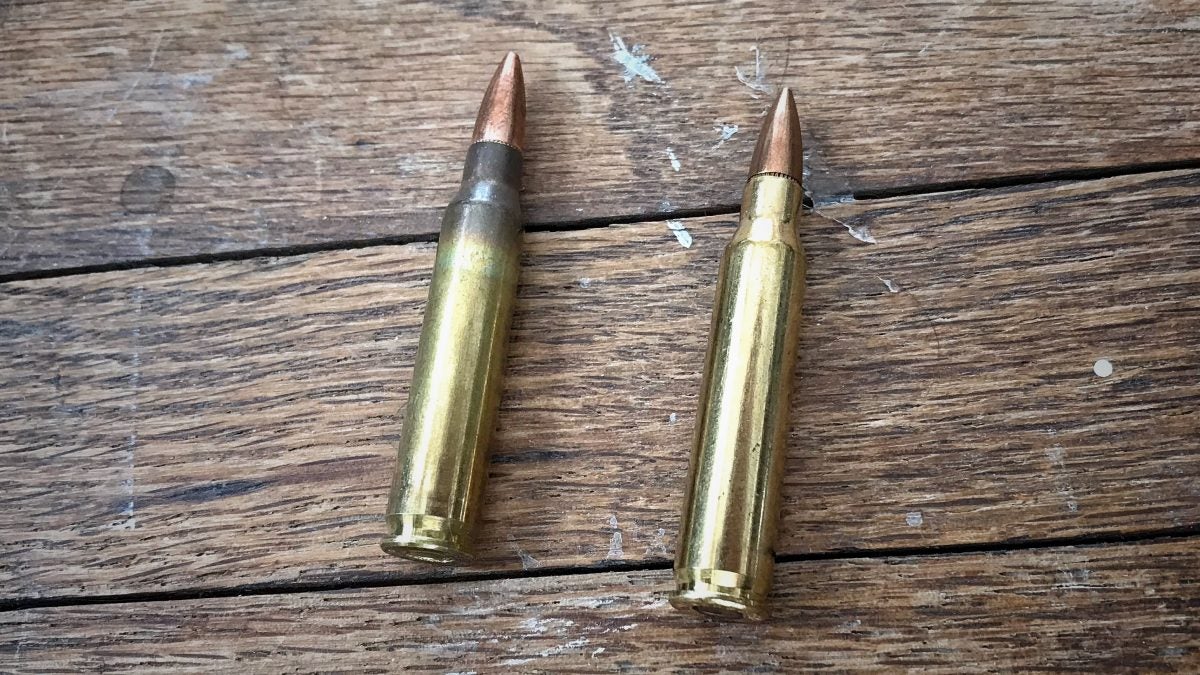
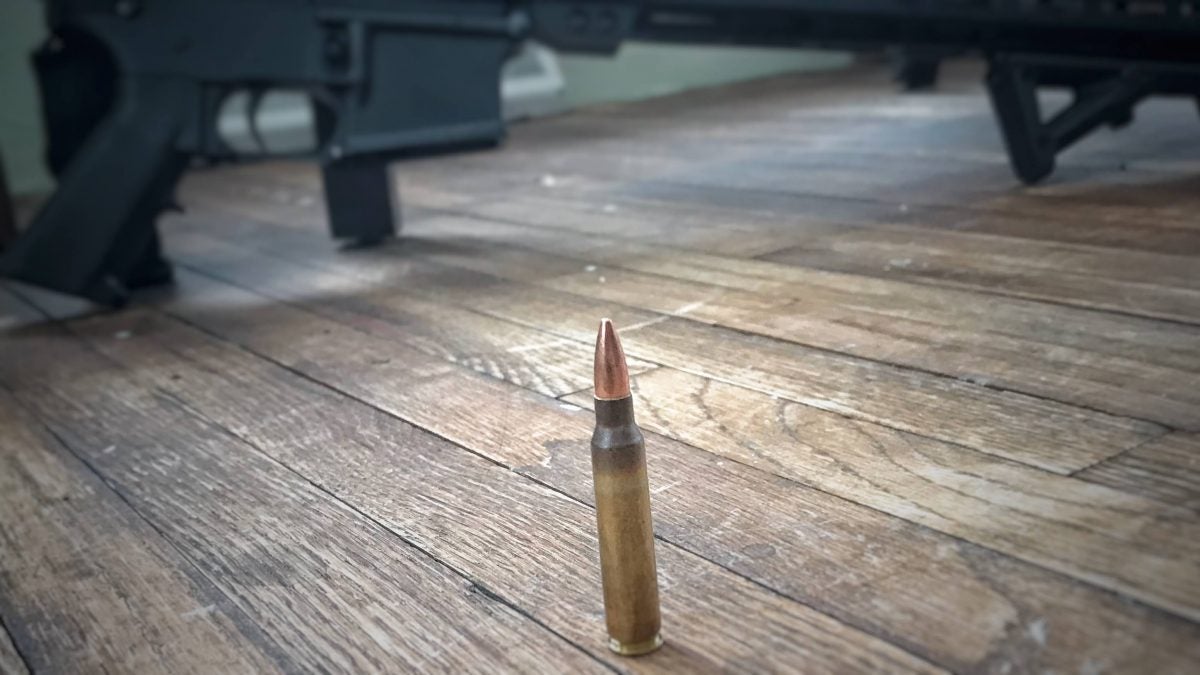
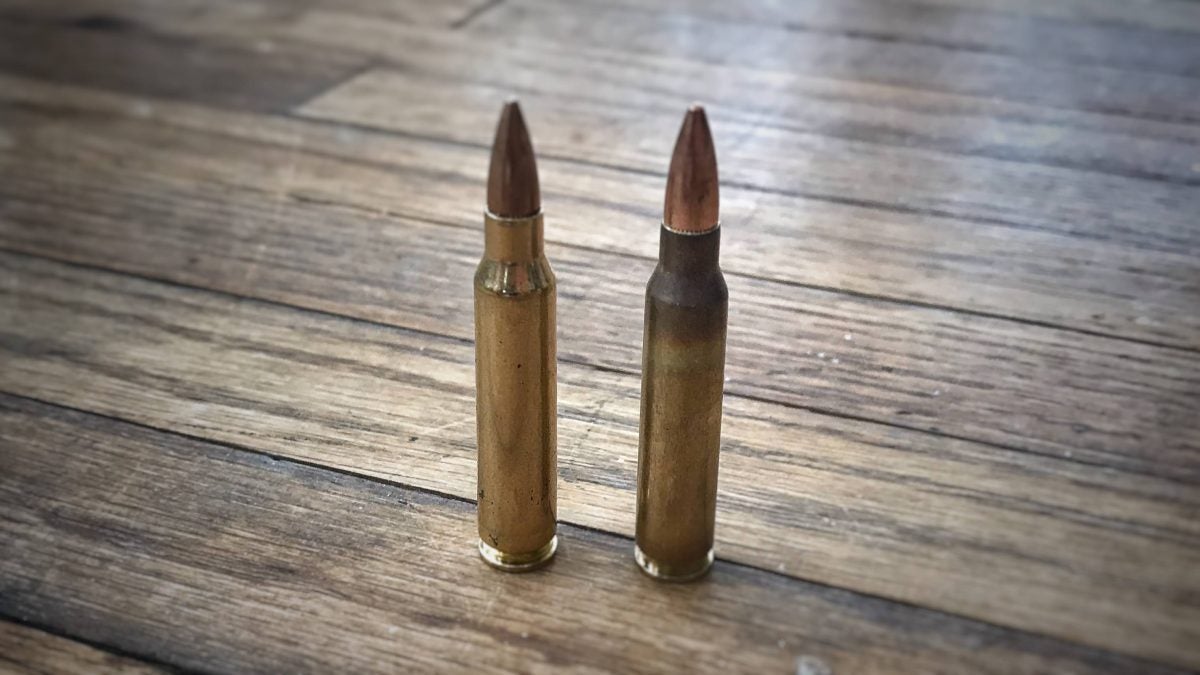
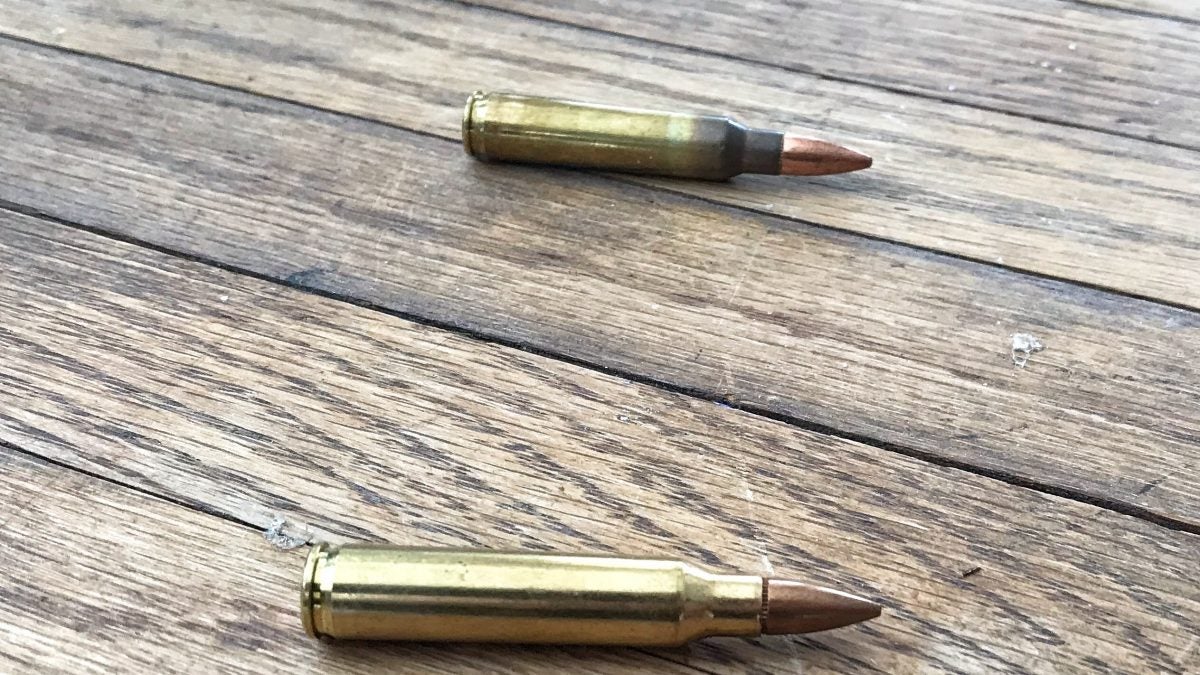
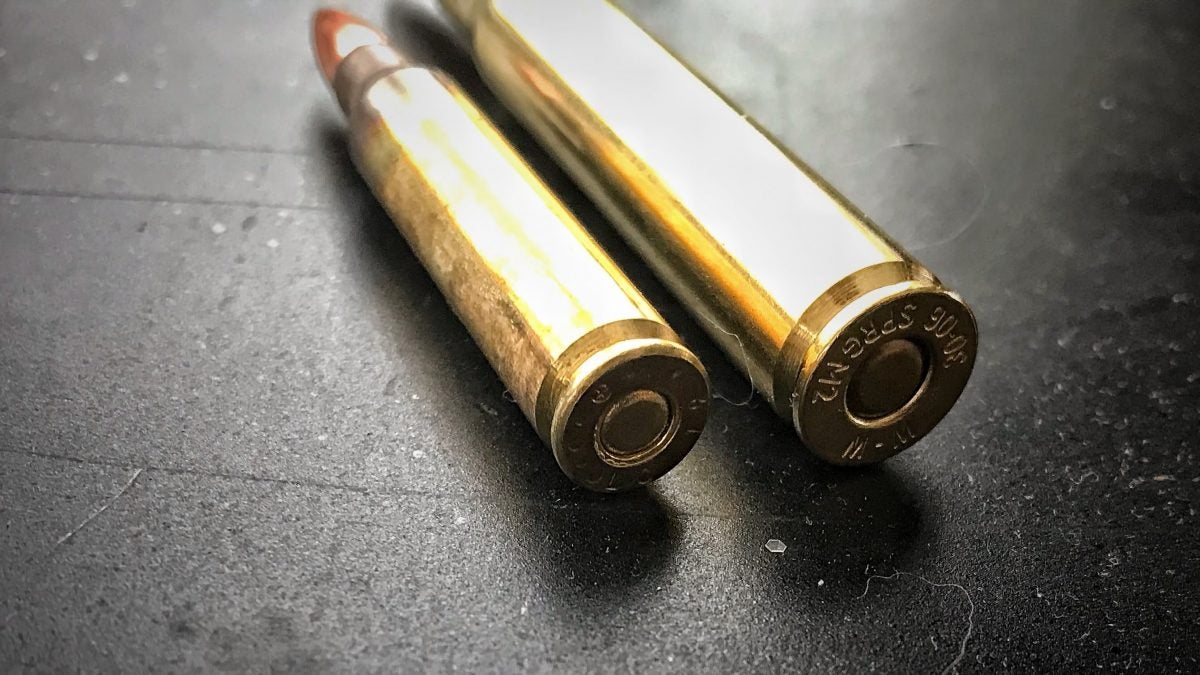
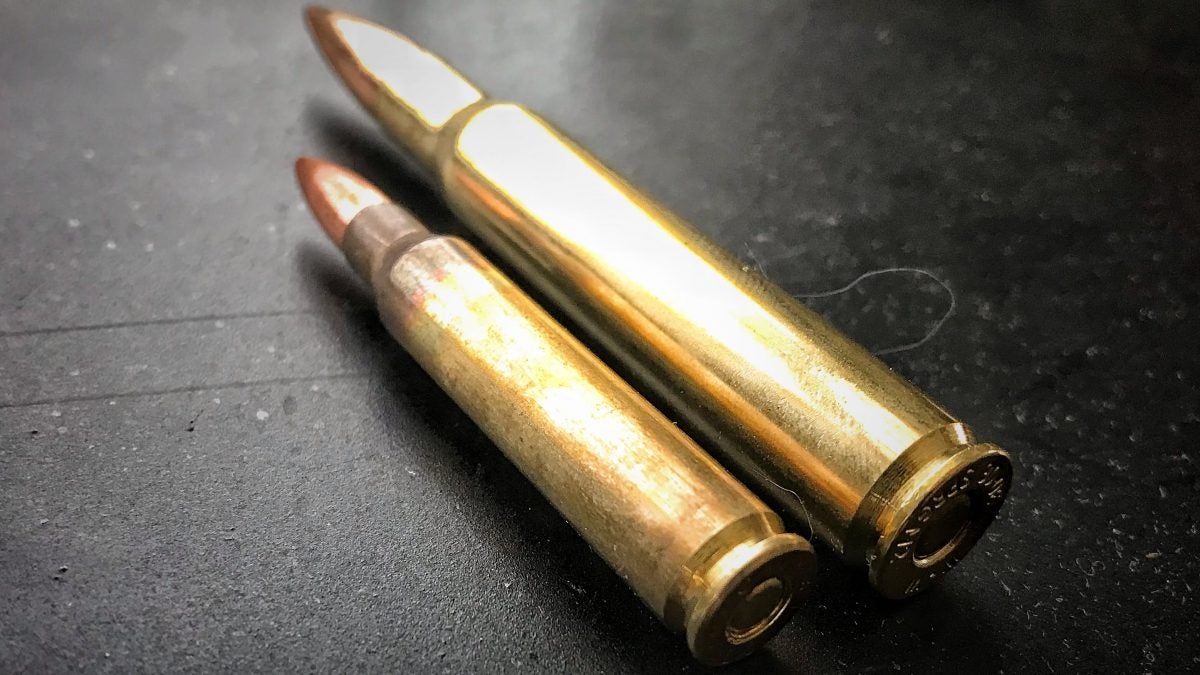
We are committed to finding, researching, and recommending the best products. We earn commissions from purchases you make using the retail links in our product reviews. Learn more about how this works.
 Your Privacy Choices
Your Privacy Choices
